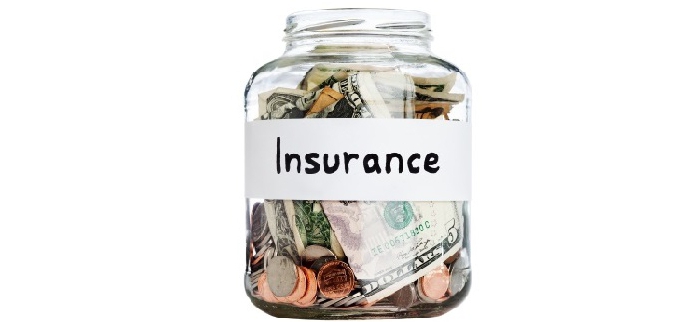The insurance premium, the calculation of such and the regulation of payments are the most important components of any insurance contract. Ignoring or unfair implementation of them can lead to the most adverse consequences for the policyholder. For this reason, everyone who is going to draw up such a contract should have a clear idea of the concept of the insurance premium, its role in the insurance process and the specifics of fulfilling this obligation of the insured.
What is meant by this concept?
An insurance premium is money owed to an insurance company for the implementation of a particular type of insurance. Payment of such is one of the key responsibilities of the insured. Its size determines the amount of subsequent insurance payments. An agreement concluded between the parties usually establishes its size, terms and procedure for payment, depending on the type of insurance and the nuances of a particular case.

This concept requires bilateral consideration:
- The economic essence of the insurance premium lies in the fact that it serves as material support for the interests of the insurer in the event of an undesirable outcome.
- On the legal side, the premium is nothing more than a monetary embodiment of the insurance obligation drawn up by the contract.
The concepts of "insurance premium" and "insurance amount", contrary to popular belief, are not identical. While the first value is calculated for the entire contract as a whole, the second is the monetary equivalent for each individual risk (event).
Also related are the concepts of insurance premiums and tariffs. The term "insurance premium", or "payment", is used when paying by installments, and means the funds periodically transferred to the insurer. A tariff is the rate used to calculate the premium amount.
Kinds
The following classification criteria for insurance premiums exist:
Sensitivity to risk behavior:
- Fixed. This is an insurance premium for which contributions do not change over time.
- Natural. Its amount is stable only in a certain period. In each subsequent, it can be adjusted depending on the nature of the risk change.
Special purpose:
- Risky. It represents cash in the amount necessary to compensate for the possible risks of the insurance company. Usually depends on the calculated probability of occurrence of insurance events relevant in a particular case.
- Savings. This is a special type of life insurance premium. It is used at the end of the contract in order to reimburse the insured.
- Net bonus. It determines the amount of funds covering the size of insurance payments for a certain period of time. If the risk develops evenly, it will be equal to the risk premium; in the opposite case, insurance companies usually apply an additional guarantee premium to protect their interests.
- Gross premium. It represents the full amount of the payment, including, in addition to the net premium, compensating premiums of various kinds, for example, advertising or covering insurance costs.
Basic principles for calculating insurance premiums
Based on its economic role, the size of the insurance premium should be such that:
- Pay back possible claims during the contract period.
- Form reserves.
- Reimburse funds spent on business.
- Provide insurer's profit.

The maximum possible price for the provision of insurance services depends on the current volume of demand for it and the amount of interest on bank deposits, as well as on the number and content of risks included in the contract. The full cost of the premium consists of the bulk of the funds needed to create reserves used to pay off obligations by the insurance company, and the additional one, which incurs the costs of doing business, developing a set of preventive measures and ensures the insurer's profit.
According to a special formula that takes into account the term of the contract, the amount of insurance amounts for a specific risk, the current tariff rates discounts and allowances, the insurer may be calculated the premium due to him. The basic amount of risk in each case is determined by the policyholder in agreement with the insurer. The remaining components of the calculation should be considered separately.
Insurance rate and insurance premium
Insurance rate refers to the rate charged on each unit. insurance amount. When calculating the total cost of the service, the insurer can use two types of indicators:
- Own development. In this case, the created tariff rates should take into account the possible behavior of insurance risks and features of the insurance object.
- Regulatory defined by the supervisory authorities. Cases of their use are established by law. This is mainly about compulsory insurance.
A single generally accepted development methodology is currently lacking. Insurance rate calculations are usually carried out using a special set of statistical and mathematical tools. So, depending on the type of insurance for these purposes, use the data of insurance and demographic statistics. The main goal of the development process is to determine the costs of insuring a particular property. Through the use of actuarial calculations, the cost and cost of each service are calculated.
Insurance discounts and allowances
Another significant component, with the mandatory use of which the insurance premium is calculated, is all sorts of corrective indicators, namely discounts and allowances.

Reducing coefficients are used by the insurer to reward the insured in good faith, fulfilling all his obligations, for example, to preserve the insured property or vehicle. Such leverage also encourages the policyholder to have long-term cooperation with a particular organization.
Premiums are used to collect additional funds allocated to the following:
- Formation of insurance company loss compensation funds with actual risk indicators above average values.
- Creation of reserve reserves for high-risk types of insurance.
- Financing preventive measures.
- Reimbursement of insurance costs.
- Compensation for losses of the insurance company for providing the installment with installments of premium payment.
Applicable insurance premium payment forms
The concluded agreement must necessarily regulate the procedure for paying off the obligations of the insured. From this point of view, all bonus payments can be divided into the following:
- One-time or one-time. This implies the repayment of the obligations of the insured in full in the form of one installment, usually made upon conclusion of the contract. This form is most often used in the organization of life insurance. Short-term types also provide for a one-time payment, for example, with baggage insurance.
- Periodic. By agreement of the parties, there is an option assuming that during contract duration A periodic insurance premium may be charged - an insurance premium. Such a payment may be:
- First one. It represents the insurance premium for the initial period of the contract.Payment of it, as well as a lump-sum payment, is the main condition securing the legal beginning of insurance relations and the formation of the obligations of the insurer.
- Follow up. This is a payment made after a certain time after payment of the first and all previous installments. The value of the subsequent period of validity of the insurance.
Advance and previous insurance premiums
According to the time of debt repayment, advance and previous insurance premiums are allocated. Under the first understand the payments that the policyholder must make before the due date in accordance with the terms of the contract. Usually we are talking about making some of the premiums. The need for such a payment method usually arises when, upon signing the contract, it is impossible to determine the exact amount of the obligations of the insured under it. Such insurance premium accounting is used to increase the transparency of the insurer.
The previous one is a savings payment. It can be made in the amount of the insurance premium or part thereof until the end of the payment period with the permission of the insurer. It should be borne in mind that in the event of an insured event earlier than prescribed in the contract, the insured person or his heir can receive not only the due insurance payments, but also the previous contributions listed earlier whose payment has not yet expired.
Features of execution of insurance premium payment and late payment

After the conclusion of the contract, the payment of the insurance premium becomes monetary obligation the insured. It must be executed by transferring (transferring, transferring) the required amount to the disposal of the insurer. As soon as the money comes to him, the obligation to pay the insurance premium can be considered fulfilled. In addition, it is possible to recover if the insurer has the right to accept debiting the amount of payment from the account of the insured, as well as when the claims of the parties to the agreement are offset.
The insurance premium does not have to be paid directly by the policyholder. The insurer may accept funds from a third party in the following cases:
- From the person insured under the contract, if at the same time he is not the insured.
- From the mortgagee.
- From the beneficiary.
A key role in the performance of such obligations is played by the factor of timely transfer of funds. Failure to comply with them within the agreed time period is called a delay. However, situations may arise differently. Even if the policyholder did everything on time, this does not mean that the insurer will receive his money on time. When resolving a possible conflict, the documented moment of sending or transferring funds is decisive, after which the policyholder no longer has them.
A proven delay in payment may have consequences for the policyholder, such as, for example, the insurer presenting claims for premium payment in court or the threat of termination of the insurance contract.
Non-payment of insurance premium
All possible results of the insured's failure to fulfill his obligations should be considered separately in two situations.
Non-payment of the first or one-time fee:
- The possibility of default by the insurer of its obligations. This happens if the entire insurance premium or down payment has not been paid by the policyholder by the time the insured event occurs under the contract. Sometimes a document may contain a clause in this regard, prohibiting the refusal by the insurer. However, even with such an outcome, insurance coverage will begin no earlier than the debt is repaid.
- Coercion to pay insurance premium. The insurer has the right to defend its interests in court.At the same time, he may demand not only payment of the amount of the premium, but also interest on the delay of such, as well as compensation for expenses incurred in connection with these circumstances. The law allows three months from the date the payment deadline to appeal to the court.
- Unilateral withdrawal from contractual relations. The insurer may cancel the validity of the document and require the other party to reimburse its costs.

Non-payment of subsequent installments:
- Sending a debt reminder. If the first or all previous parts of the insurance premium were paid by the insured, then any legal action in relation to him can be applied only if there is no positive effect from sending such a document to his address. The correct reminder must be in writing and contain information on the timing of the payment and the legal consequences of its non-payment. Confirmation of the fact of its receipt by the insured is also mandatory.
- Forced debt collection. The actions of the insurer are similar to those that he can take in case of failure to pay the first installment. However, they can be started according to the law only after unsuccessfully sending a reminder on debt repayment.
- Termination of the insurance contract. In this situation, the insurer has reason to terminate legal relations in the future. However, the policyholder may restore the effect of previous agreements if he repays his debt within one month after the date of termination. An exceptional situation that cancels the possible renewal of the contract is the occurrence of an insured event.
Insurance Premium Refund
Full or partial reimbursement of the premium paid to the policyholder becomes possible when the occurrence of the events recorded in the contract is not feasible. There is no point in continuing such a legal relationship.
The reason for the return will be the early termination of the contract associated with the death, change of ownership insurance object etc. For example, the CTP insurance premium can be refunded both in case of loss of the vehicle, and in case of its resale or the death of the owner. In other cases of termination of legal relations at the initiative of the insured, the funds paid under the law cannot be returned.

Regardless of the type of insurance, in order to defend its interests, the insured should provide the company that concluded the contract with an application for its early termination and reimbursement of part of the insurance premium with an indication of the specific reason, timing, bank details for the transfer of funds. Also, copies of the insurance policy and a document certifying the payment of contributions should be attached to it. The answer to such a request should be the agreement of the insurer to terminate the contract indicating the amount to be returned or a reasonable refusal.

